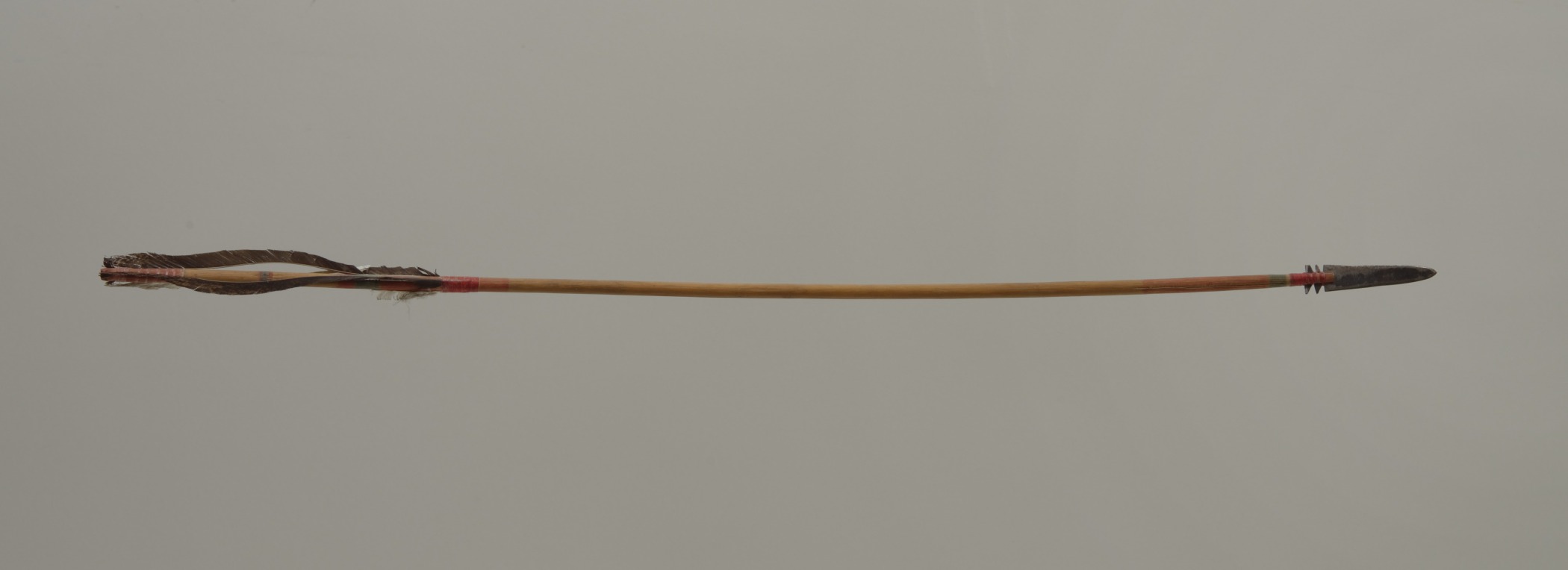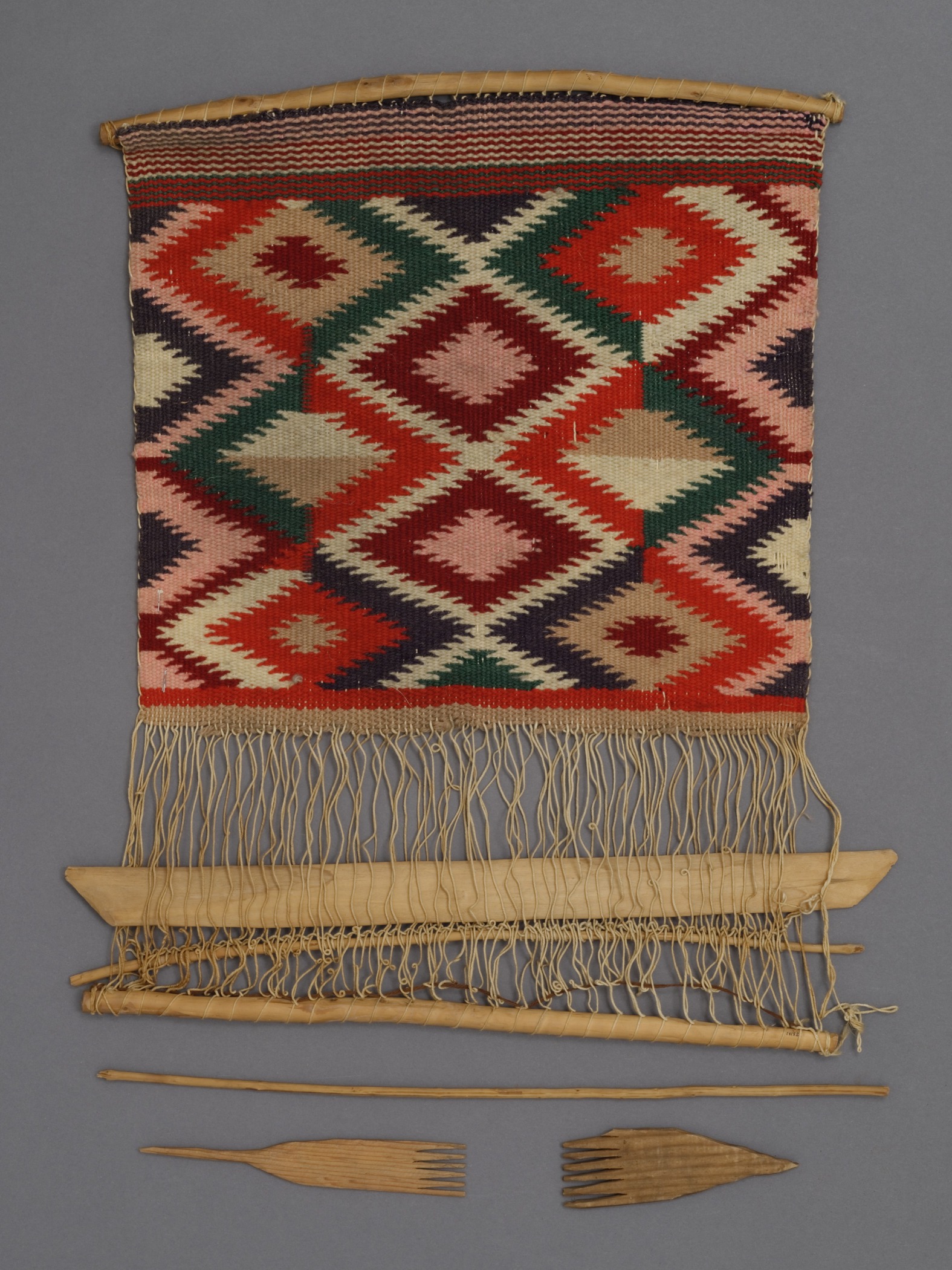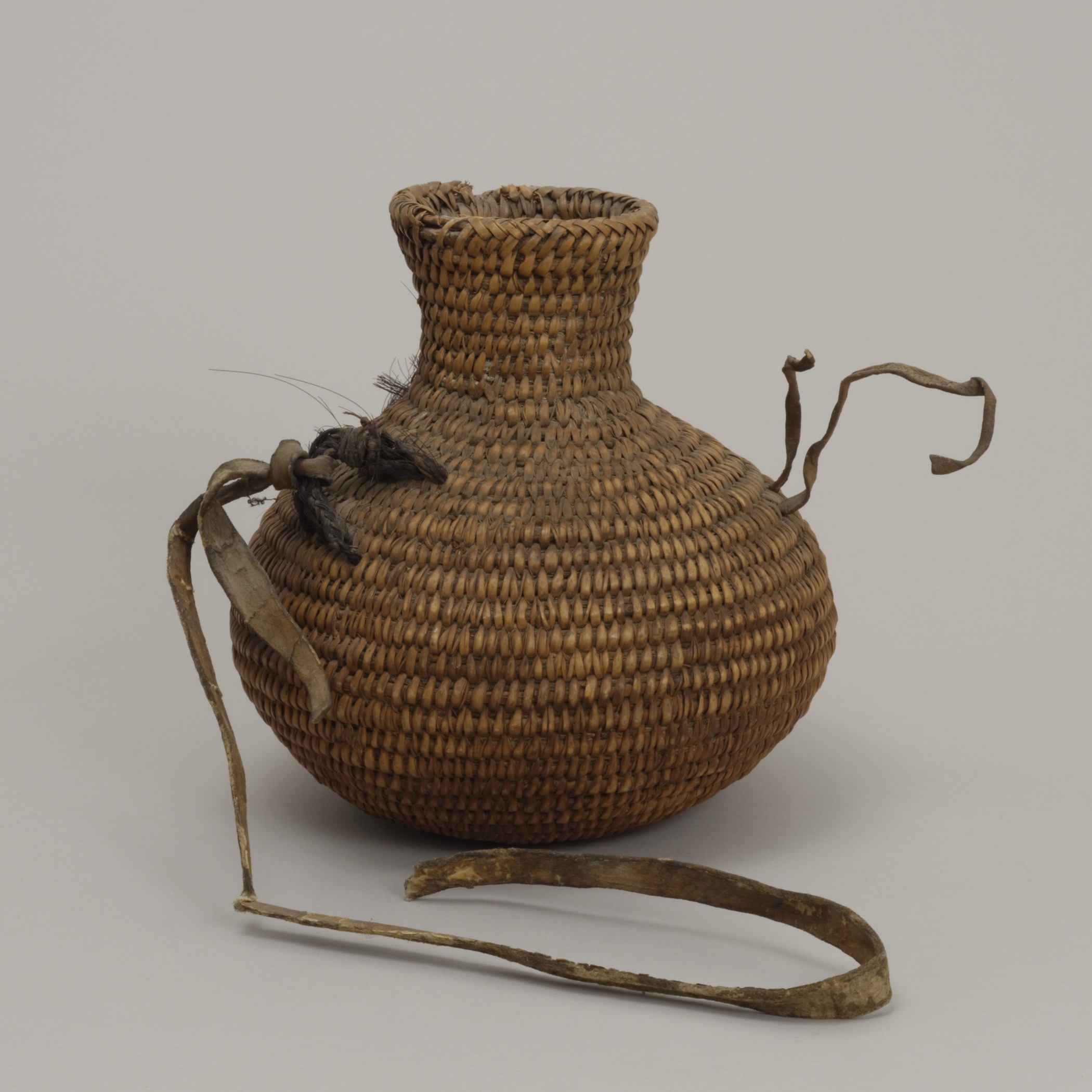Jicarilla Apache
Coil-basket water bottle
- Collected 1887–1906
- Plant fiber, horse hair, and leather
- 8 11/16 × 8 1/16 in.
Hood Museum of Art, Dartmouth College: Gift of Mrs. Ida Farr Miller; 44.18.8779
visibilityLook & DiscussThe Apache were semi-nomadic, preferring hunting and gathering to the more sedentary lives of the pueblo cultures. They had no tradition of pottery making and thus relied on basketry for cooking and storage vessels.
Basketry is the art of weaving pliable vegetable fibers, like bark, straw, wood, or grass, into storage vessels through a variety of techniques. Because basket weavers need to gather, cut, peel, and then prepare their raw materials before weaving, a single basket may take up to 6 months to complete.
One of the most remarkable types of Apache baskets is the water bottle. In the arid region of the Southwest, a reliable water bottle would have been critical to survival.
Explore the Object
This water bottle is about 8 inches tall and shaped like a jug. Its wide belly could hold a day’s water while its narrow neck would make it easy to hold in one hand. Handles made of horse hair and a leather thong could be used to tie it to a saddle.
Apache water bottles are created using coiling. Coiling is essentially a sewing method. Two or three peeled willow-shoot rods are bundled together and then wrapped in a tight circle.
The coiling begins at the center bottom of the basket and builds upon itself by spiraling upward. Each row is sewn to the previous row, producing a tight, stiff, sturdy basket.
Basketry water bottles were usually covered in pine pitch to make them watertight. As a result, water bottles generally do not have any surface decoration.
Learn More
In this video, art historian Joyce Szabo describes coiling and twining techniques used in Apache baskets.





